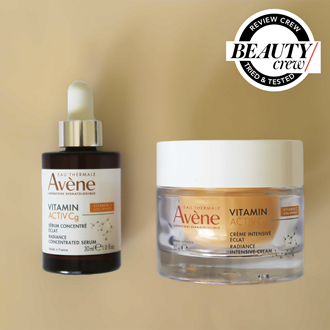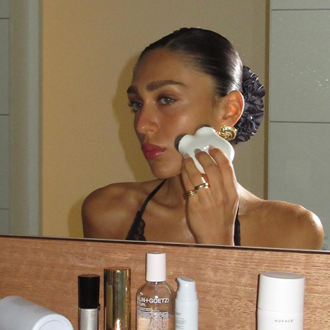The skin care ingredients that shouldn’t be mixed
You’ve been warned
Most skin care routines include a cocktail of products. From antioxidant-packed serums and skin-loving acids to moisturisers formulated with hydrating emollients and SPF, our daily regimen incorporates a myriad of ingredients that we hope will leave our skin looking clearer, brighter, smoother and more youthful.
But how do you know what ingredients work well together and which ones clash? After all, ‘the more the merrier’ doesn’t always apply when it comes to skin care.
To find out specifically which ingredient combinations we should steer clear of, we spoke to three top skin experts: Co-Director of The Clinic, Kaye Scott; Education Manager for the International Dermal Institute and Dermalogica, Emma Hobson; and Head of Education and Research and Development for DMK Australia, Debbie Dickson.
Why knowing your skin type is so important
First and foremost, “it helps to understand the difference between a skin condition and a skin type,” explains Hobson. “A skin type is genetically determined and can be categorised by assessing the amount and location of oil secretion of the skin. Over-active oil glands will produce an oily skin and under-active oil glands will produce a dry skin; if it’s just oily down the T-zone, then it’s a combination skin.”
By understanding the type of skin you have, you can then tailor your skin care routine with certain ingredients and products that will deliver the best results.
How to know which ingredients work best for certain skin concerns
While researching what products and ingredients work best for your skin type and concerns is beneficial, it’s important to consult a skin professional first. Scott explains that “having an expert analyse your skin will arm you with the tools you need to make educated decisions in the future.”
To help you understand the confusing world of skin care a little better, Hobson notes, “as a rule of thumb, cleansers and moisturisers are chosen to work with a person’s skin type. These are not too difficult to choose oneself i.e. oil-free cleansers containing oil-absorbing clays for oily skin, facial washes for combination skin and milk or cream cleansers for dry skin. The rest of the product categories are normally designed for a person’s ever-changing skin conditions, such as dehydration, breakouts, congestion, pigmentation etc. These are more difficult to self-select, which is why seeking the advice of a professional skin therapist is essential.”
The ingredient combinations that don’t mix well
While many skin care ingredients work in harmony with each other, there are a few combinations that are best avoided. One such combination is using acne-zapping benzoyl peroxide and retinol together. Not only have both ingredients been found to deactivate each other, resulting in a complete lack of results, Dickson notes “this combination [of ingredients] could make the skin very dry and irritated.”
Hobson also advises steering clear of mixing vitamin C and alpha hydroxyl acids (AHAs) because AHAs “change the pH of the vitamin C enough to destabilise it, making its antioxidant properties ineffective. So, if you’re wearing a serum with salicylic acid or glycolic acid, choose an antioxidant serum with free-radical fighters like green tea or resveratrol,” rather than vitamin C.
Finally, one of the most important ingredient combinations to avoid is beta hydroxyl acids (BHAs), AHAs and retinol. “Layering exfoliating BHAs or AHAs (like salicylic, glycolic and lactic acid) and retinoids can leave skin red and peeling,” explains Hobson. While [all these] ingredients can be used in a skin care routine, it’s best to use AHAs or BHAs in the morning and stick to using retinoids in the evening – especially as retinols can make the skin more susceptible to sun damage (even when SPF is worn).
Need more skin care tips? Then discover how to choose the best cleanser for your skin type and find out six different ways to calm sensitive skin.
Are there any ingredient combinations that you’ve found don’t work for your skin? Let us know in the comments below.
Main image credit: Getty

Kate started working for BEAUTYcrew in early 2016, first as a contributor, and was then named Beauty Writer in 2017. She loves picking the brains of the industry's top experts to get to the bottom of beauty's toughest questions. Bronze eyeshadow palettes are her weakness and she's forever on the hunt for the perfect nude nail polish to suit her fair skin. Her words can also be found in Men's Health magazine, and she now works in PR.








